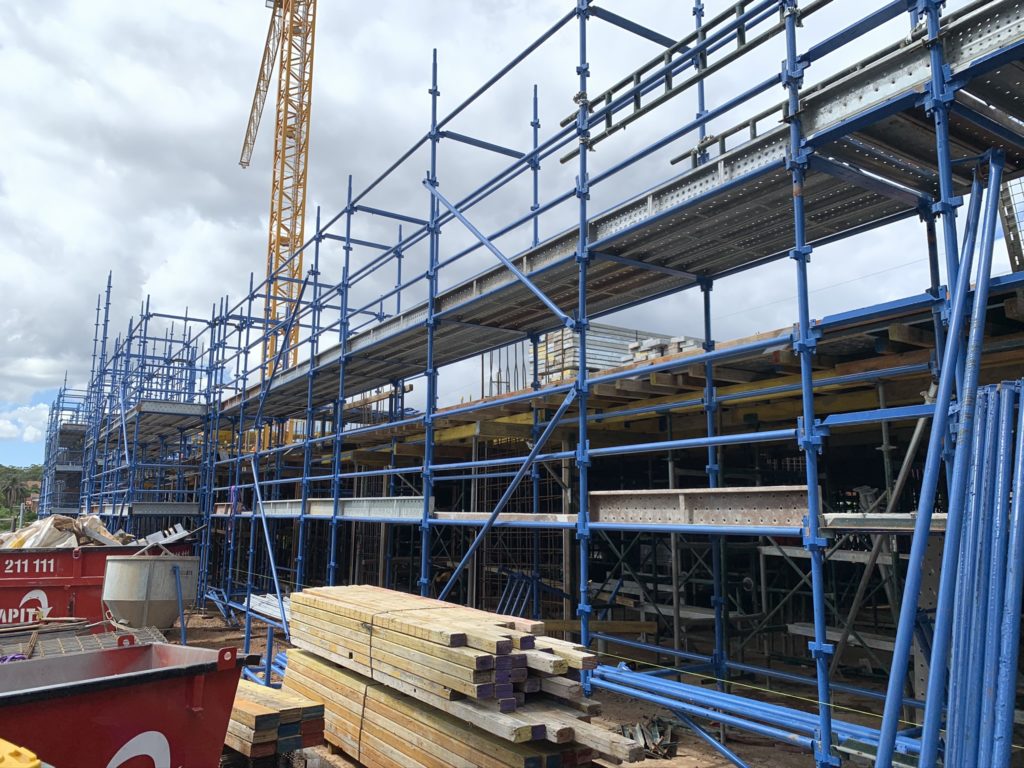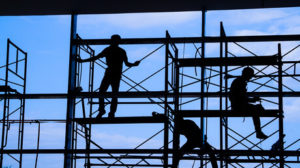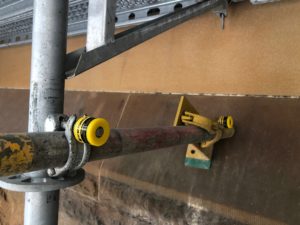SafeWork NSW
13 March 2020
Scaff Safe 2020
SafeWork NSW will continue to target scaffold safety on construction sites throughout 2020. Inspectors will be attending worksites and talking with employers and workers to ensure compliance. Inspectors will also be working with scaffold suppliers and installers to ensure scaffolds are built to standard and are safe.
On-the-spot fines of $720 for individuals and $3,600 for employers can be issued to those who place workers lives at risk from falls from heights, or for undertaking scaffolding work without a high risk work licence.
When looking at scaffolds, our inspectors will be checking that scaffolds:
- are built to Australian Standards
- are not missing components
- are erected, dismantled or altered by people with the correct scaffolding high risk work licence
- remain compliant throughout the construction project.
See our findings from 2019 in our Operation Scaff Safe 2019 project report.
Conduct a scaffold safety check
To ensure you have a safe and compliant scaffold on site, principal contractors or scaffolders can use this checklist to conduct a basic inspection.
Duty holder obligations
As an employer, principal contractor, and/or a PCBU, you have the main responsibility for the health and safety of everyone in your workplace, including visitors. This is your primary duty of care.
There are specific laws about working with plant, including scaffolding to make sure it is safe for users and people nearby.
Managing the scaffold
Principal contractors (and others who manage or control the scaffold) must control the risks associated with the scaffold. This includes ensuring:
- the scaffold is only erected, altered and dismantled by a worker with the appropriate scaffolding high risk work (HRW) licence. You can check a high risk work licence is valid by visiting http://www.licencecheck.nsw.gov.au
- the scaffold has been inspected at the following intervals:
- before first use
- prior to use after alterations or repairs
- after an event (eg high winds or storms, hit by plant, unauthorized modifications) that could affect scaffold integrity or stability, and
- at regular intervals not exceeding 30 days.
- a handover certificate is obtained from the scaffolder and is kept on-site until the scaffold has been dismantled
- site inductions and ongoing toolbox talks clearly state that unlicenced workers are prohibited from altering a scaffold, and who to contact if the scaffold needs altering or repair
- workers are prevented from accessing incomplete sections of the scaffold
- that scaffolders provide an adequate Safe Work Method Statement (SWMS) before starting any high-risk construction work, which should be kept on-site until the scaffold is dismantled
- any work undertaken at the worksite is done in accordance with the SWMS provided
- Principal contractors have systems in place to ensure proper planning and sequencing of trades so that the scaffold remains safe and compliant throughout the build.
Incidents
Scaffold incidents most commonly involve:
- people falling from scaffolds that are poorly erected, incomplete or have been altered without authorisation
- people falling from scaffolding due to misuse such as standing on guardrails
- scaffold collapse or failure of components due to incorrect assembly, incompatible componentry, overloading or unauthorised alteration such as tie removal
- objects falling off scaffolds and hitting people below
- scaffolds being struck by mobile plant or vehicles or being snagged by a crane.
Training and licensing
An appropriate scaffolding licence must be held by anyone performing scaffolding work on a scaffold where a person or object could fall more than 4 metres from the platform or structure. Unlicenced workers and their supervisors could each be issued with an on-the-spot fine of up to $3,600.
The type of scaffold to be erected and dismantled will determine the class of scaffolding licence required, for example, basic scaffolding (SB), intermediate scaffolding (SI) or advanced scaffolding (SA).
If you are a scaffolder and doing the wrong thing, you could also have your licence suspended or cancelled, and any compliance action taken will be publicly displayed on your licence records.



